FLAT TOP, W.Va. — With the exception of corn, perhaps no vegetable is as all-American as the pumpkin. Carved as a Jack-O'-Lantern or pureed into a Thanksgiving pastry, the pumpkin—and the pumpkin pie—are as American as, um, well, apple pie.
In many ways, pumpkins are especially important in West Virginia, where they sustained families isolated in the mountains through the winter, and state agriculture officials are now promoting them as a high-yield crop.
As pumpkins are often harvested in October, around the time of Halloween, there's much to be said of their cultural role as the legendary Jack-O'-Lantern in West Virginia and beyond
Irish immigrants brought with them the tradition of carving lanterns from turnips as part of their Halloween celebration, and they quickly adopted the pumpkin for the same purpose.
Pumpkin lore seems particularly tied to the rural mountain areas of the East, where such spiritualism lingers, and it's no surprise that Washington Irving chose the hills along the Hudson as the setting for The Legend of Sleepy Hollow.
But pumpkin lore extends into the dim prehistory of the continent to a time when early peoples discovered that pumpkins (gourds, generally) grew best when grown together with corn and climbing beans.
The Iroquois of upstate New York had been cultivating what they'd termed "The Three Sisters" for more than three centuries when Europeans arrived.
Natives of eastern North America planted all three together in a single small mound, seeding corn at the center, planting a small circle of beans around them, and then a third ring of gourd seeds around the exterior.
The corn provided sturdy central stalks that maximized sunlight and served as a support for the beans. The beans held the stalks together. And the large leaves that opened along the pumpkin vines created a living mulch that shaded the soil, keeping it cool and moist, deterring weeds, and preventing evaporation.
The pumpkin's prickly leaves and vines also warded off raccoons and other pests. The beans also pulled nitrogen from the air, bringing it into the soil for the benefit of all three, though natives may not have understood the mechanism.
Native Americans who used pumpkins often dried strips and wove them into mats, or roasted long strips over an open fire and ate them.
Certainly, one of the first recipes colonial wives thereafter contrived was to bake pumpkin into a pastry. The earliest recipes used the rind itself as the baking dish. The top was carved open, the seeds and fibers were removed, and the pulp inside was blended with milk, spices, and honey. The whole was then baked in hot ashes.
Of course, the story of the pumpkin in Appalachia wouldn't be complete without some background on the custom of creating Jack-O'-Lanterns at Halloween.
Pumpkin lore in the eastern U.S.
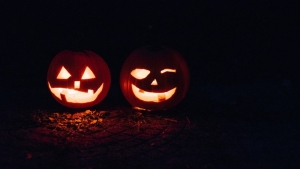
The practice originated from an Irish myth about a man nicknamed "Stingy Jack." According to one version of the legend, Jack had invited the Devil out to have a drink with him. However, Jack, being stingy, didn't want to pay, and so convinced the Devil to turn itself into a coin he might use to buy their drinks.
The Devil complied, but Jack decided to pocket the coin instead, alongside a little silver cross he kept, preventing the Devil from changing back. Jack later freed the Devil under the condition that it would not bother him for one year and that, should Jack die, the Devil would not claim his soul.
At the end of that year, Jack convinced the Devil to climb a tree to pick a piece of fruit. While among the branches, Jack carved a sign of the cross into the trunk so the Devil could not come down until it had promised Jack not to bother him for another ten years.
After Jack's death, God Almighty declared that he would not allow such an unsavory character into heaven, and the Devil was loath to allow Jack into hell, so he sent him off into the night with only a burning coal to light his way. Jack put the coal into a carved-out turnip and has been roaming the Earth with it ever since.
The Irish began to refer to this ghostly figure as "Jack-of-the-Lantern" and later as "Jack-O'-Lantern." He is also known as the Night Watchman and the Will-O'-the-Wisp.
In Ireland and Scotland, people began making their own versions of Jack's lanterns by carving scary faces into turnips or potatoes and placing them in windows and near doors to frighten away Stingy Jack and other evil spirits. In England, they used large beets
Immigrants in the late 1700s and early 1800s brought the Jack-O'-Lantern tradition with them, but soon found that pumpkins make ideal lanterns.
Pumpkins in fairy lore
Many immigrants also brought with them a belief in fairies, and many old believers in West Virginia long maintained the practice of treating fairies as a kind of practical magic, and some still do.
One interesting aspect of fairy lore concerns pumpkins. If you find smaller pumpkins inside the garden in late autumn, these are ideally suited to faery houses and caves. They may keep the fae in your garden longer to help protect it from early winter frosts. By providing an edible, livable structure for the fae to eat, they will happily stay longer before moving into the woods for winter.
Some gardeners add candles or lights to help guide the faeries due to early nightfall. Some people will be lucky enough to find mushroom faery rings if the fae are extremely happy and choose to dance around, protecting your garden.
Growing, harvesting, and pumpkin preparation
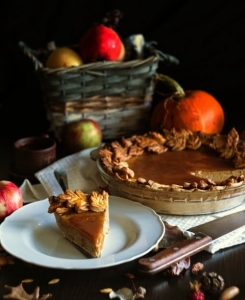
Of course, there a many practical matters concerned with the cultivation of pumpkins. Pumpkins are winter squash—gourds harvested and eaten late in the growing season when their rinds have hardened, as opposed to summer squash such as zucchini, which will not keep as long as a hard-rind squash.
Winter squash are packed with antioxidants and vitamins, have no fats, and can be prepared sweet or savory.
In a 100-gram amount, raw pumpkin provides 26 calories of food energy and is an excellent source of beta-carotene, providing 20 percent or more of its daily value, and vitamin A, providing 53 percent.
When shopping for an edible pumpkin, choose firm, well-shaped squash that are heavy for their size and have hard, tough skins. Do not use those that have sunken or moldy spots.
Avoid squash with cuts or punctures. Slight variations in color do not affect flavor. A tender rind indicates immaturity—a sign of poor quality in winter-squash varieties.
Sugar Pie Pumpkins have long been a favorite for pies, though other tasty varieties include Cinderellas, Pink Bananas, and Blue Hubbard Squash. Connecticut field pumpkin is one of the oldest pumpkin varieties, and it's what most of us think of as a carving pumpkin or a classic pumpkin.
Winter squash can be stored for a long time into winter. For the best results, place whole winter squash on thick pads of newspapers in a cool, dry, well-ventilated location, preferably between 45 and 50 degrees. Check the squash regularly for rot and use it within three to six months, depending on the variety.
You may refrigerate tightly wrapped pieces of winter squash, such as banana squash, for up to five days. Once squash is cooked by steaming or baking, the flesh can be stored in the freezer until needed.
To prepare and use winter squash, find squash that feels heavy for its size and has hard, deep-colored skin, free from blemishes. All varieties are great for pureeing, roasting, and baking. Once squash is cooked and mashed, it can be used in a variety of dishes, including soups, main dishes, vegetable side dishes, bread, muffins, custards, and pies.
Pumpkin seeds are well-known healthy snacks and can be planted the next season as well. To harvest the seeds, remove the pulp, fiber, and seeds from inside the pumpkin. Place this mass in a colander, and run it under the water. As the water runs over the pulp, start picking out the seeds, rinsing them. Do not let the pumpkin pulp sit in non-running water.
You're likely to find more seeds inside the pumpkin than you can plant, so once you have a good number rinsed, look them over and choose the largest. Plan on saving three times more pumpkin seeds than the number of plants you plan to grow next year. Larger seeds are more likely to germinate.
Place the rinsed seeds on a dry paper towel. Make sure they are spaced apart; otherwise, the seeds will stick together. Place in a cool, dry spot for one week. Once the seeds are dry, store them in an envelope. Any seed, pumpkin or otherwise, will store best if kept cold and dry.
One of the best places to store pumpkin seeds for planting next year is in your refrigerator. Put the pumpkin seed envelope in a plastic container. Place several holes in the container lid to prevent condensation from building up inside. Place the container with the seeds inside at the very back of the fridge. Next year, when it comes time to plant, your seeds will be ready to go.
Pumpkins do best when their seeds are planted directly in the ground. Though if your growing season is very short—say you live among West Virginia's highest mountains—seed indoors in peat pots two to four weeks before the last spring frost. Wait until the soil is 70 degrees or more before sowing seeds.
Sign up to receive a FREE copy of West Virginia Explorer Magazine in your email weekly. Sign me up!
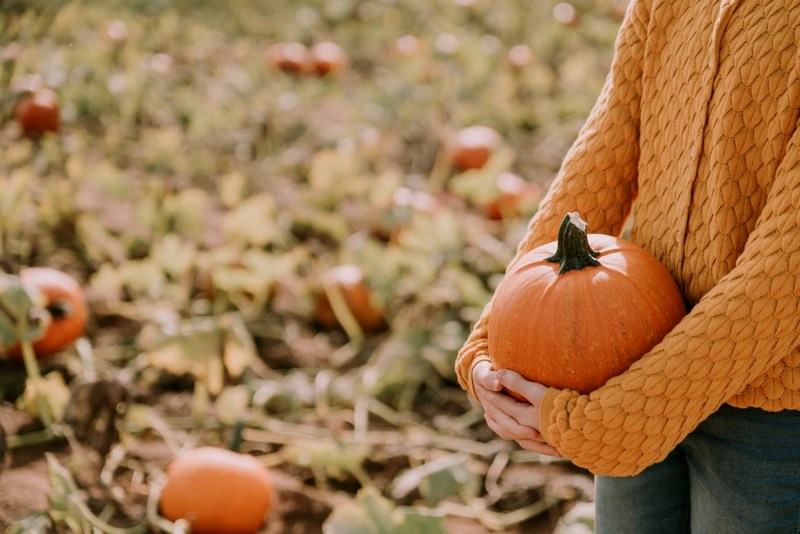
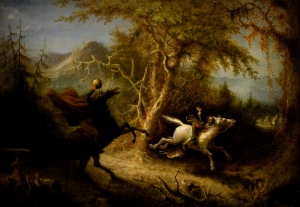
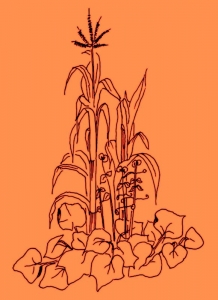


Growing up in WV, I had never heard the full story of pumpkin growing and jack-o-lanterns. Thanks. This article is being shared with some of my friends who have a lot to say about our state and are often critical. Have any of them ever visited WV? The answer is NO! I wish I had not lost my 5th grade West Virginia History book.